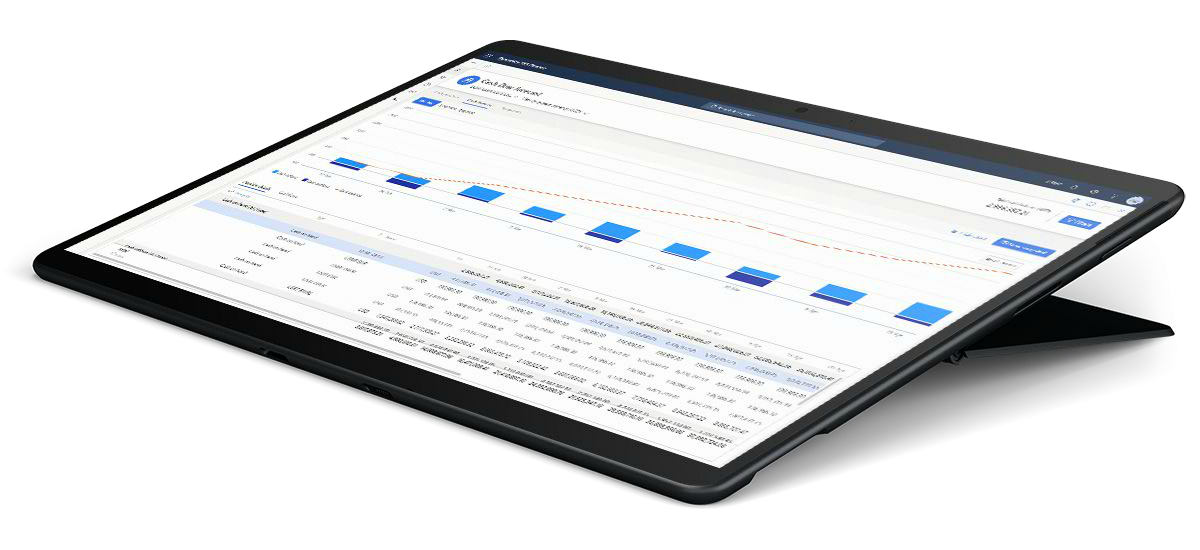The Best Practices of CRM Implementation
Customer Relationship Management (CRM) systems help teams focus on providing the best experience for their users, but not all CRMs are created equal. Provided in this guide are the top 10 best practices to remember when bringing a new CRM solution into a business.
top 10 best practices
CRM Implementation best practices
When guiding a business through a CRM implementation, the technology alone can only help a business so much. It’s essential that they sit down and discuss the best practices. Not only do CRM solutions increase organizations profitability by streamlining processes in your sales, marketing, and service divisions. It also lets you focus on building and maintaining the customer relationships that matter. This article will be covering the following implementation best practice topics so you can get the most out of your CRM solution:
Discuss Pain Points and Set Goals
The most successful software implementations work because the process starts with a thorough understanding of what the company needs and wants to accomplish. Before implementing a CRM, a company needs to understand the pain points it would like to solve and then set goals relating to the improvements they expect to see.

- What processes do you hope to improve?
- What do you need from a CRM?
- What problems are you trying to solve?
Once you have answers to those questions, you can move forward with setting goals that follow the SMART framework, making them Specific, Measurable, Actionable, Realistic, and Time-bound. Setting a SMART goal requires the company to identify relevant metrics to make that goal measurable, so the company should find a way to track those metrics and set milestone goals along the way to keep them on track.
Understand Cross-Team Needs
When selecting a CRM, it’s crucial that a business addresses the needs of internal users, not just the top sales reps or other key players. After all, the overall adoption and success of the CRM system depend on the cooperation of everyone, be it IT personnel, customer support reps, or finance professionals.
Before choosing a CRM, it’s important that the business seeks feedback from every team and takes that feedback seriously. Everyone’s needs and concerns should be considered when determining what CRM solution is best for the company. Overlooking other teams will only lead to roadblocks because, while the sales reps may be happy with the CRM, everyone else will struggle, potentially impacting productivity, efficiency, and the overall effectiveness of the system.
Seek Organizational Buy-In
Oftentimes, organizational buy-in happens from the top-down. In other words, if you want frontline employees to adopt the CRM system, you must start by seeking full support from the executives. If you have executive buy-in for the solution, information and explanations will trickle down to every internal user, helping them to understand how the CRM will impact and improve their work on a day-to-day basis.
Ultimately, the majority of the workforce will not take kindly to a change in their routine unless they have been convinced that adhering to the new processes will positively change their workday. Emphasize for each team how the CRM will benefit them directly, emphasizing time saved, reduced repetitive work, and so on. Then, go on to explain how it will positively impact the business.
Look Ahead to Future Needs
Another aspect that should be thoroughly considered during the evaluation phase of various CRM systems is the business’ future needs. The best CRM will scale with a company as it grows and faces changing needs. The wrong CRM will have a low ceiling, forcing the business to transition to yet another solution when they reach a certain size limitation or come to need a specific feature that their current solution doesn’t have. The best CRMs are designed to grow with companies, meaning that not only is the pricing fair to scale with, but the software offers personalization and customization options that make it easy for the company to stick with their existing solution as they grow over time. Choosing a solution that the business can stick with for the long run is ideal, so it’s important to evaluate future requirements and plan for the predicted and plausible changes, events, and needs.
Garnering an understanding of "why" the CRM is being implemented is essential to successful implementation.
Plan a Phased Rollout
Getting teams to adopt a CRM can be tough, especially since 40% of employees do not understand what a CRM is or how to use one. A phased rollout will make widespread user adoption and success easier to achieve.

When considering a phased rollout, though, you have to keep these variables in mind:
- If you take too long, users will lose interest.
- If you go to fast, users will be overwhelmed.
- Seek to balance time, value, and function.
It’s essential that a business addresses concerns and questions before the rollout, prepping their teams for a successful first day of adoption. It’s best to organize introductory days for each team or department to address the unique benefits and use cases that will apply to each section of the business. From there, the rollout schedule can be introduced.
Rollouts work best if they go one team or department at a time, assuring that each new user base has a firm grasp of the system and how they should be using it before the business moves on to a new set of users. Some teams or departments may be trained simultaneously to speed up the rollout, but that requires a business to invest in a larger implementation team to pull it off. There’s no set rule as to how long a rollout should or will take, and it ultimately comes down to the size of the business and its resources.
Explore and Plan Integrations
No CRM is effective if it’s acting as a standalone solution. The best CRMs integrate closely with a business’ other systems, allowing them to gain in-depth insight into who their customers are, how they interact with the business, and what the sales and service reps should be doing to improve customer success. There are also countless internal systems that a CRM should intertwine with, such as financial reporting software.
Integrations should be planned early on in the process. In fact, they should be considered before a CRM is selected to ensure that the chosen solution will integrate with a business’s existing systems. If custom APIs or other accommodations need to be created, the timeline should allow for such to ensure the integrations are up-and-running when they need to be.


Invest in Hands-On Training
Once the CRM is live, team members will require varying levels of training and follow-up so they know exactly how they should be using the CRM effectively in their day-to-day work. Businesses should work to reinforce routine and efficient use of the CRM system until it becomes a habit. Ultimately, this process could take months to complete, but it’s time and effort well spent. Businesses should see hands-on training and follow-up as an ongoing investment as part of the CRM’s success. Over time, the need for training and reinforcement will be less and less necessary, but it’s essential that businesses continue to set new performance goals and track their associated metrics to ensure the CRM is performing as intended.

Learn from Analytics
The best CRMs produce a variety of metrics that businesses can utilize to their advantage. It’s critical that companies routinely analyze their CRM’s performance and how it’s impacting the day-to-day work of its users. Businesses can learn from these analytics and use this invaluable insight to better guide their users on how to get more out of the system.
Furthermore, analytics can reveal the sales and service processes that work well. Also those that don’t work well, helping businesses inform their strategies and processes using real-world results and data. Given that, a business should devote resources to routinely reviewing CRM data and applying that information to improving its processes.
Take Advantage of Automation
One of the most powerful aspects of a great CRM system is that a business can automate many repetitive tasks that annoy daily users and eat away at productivity. Companies should consider automation an ongoing effort since analytics and software upgrades will reveal new opportunities over time.
As users grow familiar with the workflow, figure out where automation can take over. Users should not be spending a lot of time entering or finding data — the best CRMs will do that for them, guiding users to the next step they should take when handling a customer and identifying a new opportunity for them when they close a deal. With that being said, set and forget automation rules across as many projects as you like. By centralizing control over your automation environment, you will not only save time but you can scale your projects confidently with only a few, quick clicks.
Constantly Strive for Improvement
Last but not least, your business should strive for constant improvement with its CRM and overall processes. Businesses are on the cusp of some amazing innovations. It’s only a matter of time before artificial intelligence, machine learning, and other powerful technologies begin to fully merge with CRM solutions. As such, it’s essential that companies keep their eyes on the latest trends and opportunities.
Keeping CRM software up-to-date and continuously learning about the latest releases, improvements, and upcoming features will help a business stay on top of the possibilities that their CRM can bring. Maintaining open lines of communication with the vendor’s representative is crucial to ensuring success because it verifies that a business never falls behind on critical software updates or new features. Ultimately, if you’re only going to remember one piece of advice, make it this one.
Set Your New CRM Up for Success
To recap, setting up your new CRM for success starts with a thorough planning phase. Understanding your teams’ needs, setting goals, and getting people on board are fundamental steps you must take before you even think about rolling out new software. From there, you can plan integrations, create a reasonable timeline for the rollout, and start training your users so they’re ready to hit the ground running. Above all, your organization must adopt the proper mindset with the recognition that there is always room to improve and you should always be looking for that next step, opportunity, or goal that you can take to grow as a company. If you can do that, your CRM will play a vital role in your thriving business.